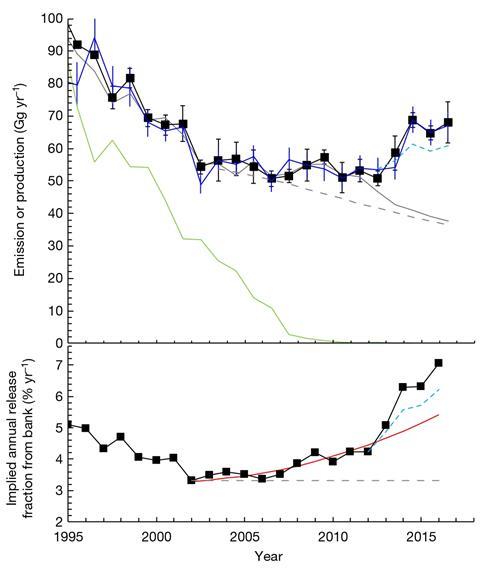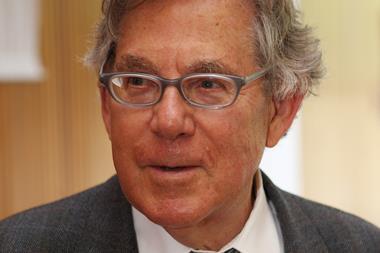Surprise increase in trichlorofluoromethane emissions linked to east Asia
Atmospheric levels of a key ozone-depleting chlorofluorocarbon (CFC) are not going down as fast as they should be, researchers in the US have discovered.
Their results indicate that emissions of trichlorofluoromethane – known as CFC-11 – are increasing, suggesting it is still being produced and used despite a ban on manufacturing it after 2010. The researchers warn that continued production of the gas could delay recovery of the ozone layer. CFC-11 was originally used as a refrigerant but was banned in 1987 under the Montreal Protocol, the international agreement designed to protect the ozone layer.
These results are shocking
Dwayne Heard, University of Leeds
Stephen Montzka and colleagues at the US National Oceanic and Atmospheric Administration (NOAA) looked at levels of CFC-11 in the atmosphere using measurements taken at the Mauna Loa Observatory in Hawaii. As expected, CFC-11 levels have been declining since the chemical was banned and production phased out. But the researchers noticed the rate at which it is declining appeared to be slowing down. Following the introduction of the Montreal Protocol, atmospheric levels fell steadily from 2002 to 2012. But from 2012 onwards the decline in CFC-11 has been 50% slower than expected.
The researchers built mathematical models to account for these observations, which suggest CFC-11 emissions have actually been increasing by around 25% each year since 2012, despite virtually no CFC-11 production being reported to the relevant authorities during this time. ‘The increase in emission of CFC-11 appears unrelated to past production; this suggests unreported new production, which is inconsistent with the Montreal Protocol,’ Montzka and colleagues conclude.
Huge implications

‘In a word, these results are shocking,’ says Dwayne Heard, an atmospheric chemist at the University of Leeds in the UK. ‘The decline in CFC-11 is the graph that we all show in our atmospheric chemistry lectures to illustrate the effectiveness of the ban on CFCs. I think this will be quite a shock to many people who, like me, thought the Montreal Protocol was working well.’
He adds that the results could have ‘huge implications’ for ozone recovery. ‘The slower decline in CFC-11 means a delay in recovery, and as CFC-11 is a strong greenhouse gas this [will also contribute] to more global warming.’
Although Montzka and his colleagues could not pinpoint the exact location of the new emissions, some of their observations and models offer clues as to where they might be coming from. They found that the difference in CFC-11 concentrations between the northern and southern hemispheres has been increasing, which points to a northern hemisphere source.
They also modelled the movement of air masses reaching the Mauna Loa observatory, and correlated levels of CFC-11 to other chemicals associated with anthropogenic emissions. Together, this analysis suggested the emissions are coming from east Asia.
Another key question is whether there could be another explanation for a slower decline in CFC-11 post-2012, such as a change in the rate of chemical processes such as UV photolysis that break down CFC-11 in the stratosphere, or an increase in emissions from CFC ‘banks’ – reservoirs that persist in old equipment and products that are still in use.
However, the researchers’ models suggest that neither of these effects are large enough to account for the rate change they observe. ‘Emissions from “banks” would have had to have doubled, which is considered very unlikely,’ says Heard. He adds that it is safe to rule out experimental error. ‘Three different instrument measurements systems are used by NOAA to measure CFC-11, and they all showed the same trends,’ he says.
Other recent studies have warned that ozone recovery may be slowing down, and that the ozone layer faces new threats such as rising dichloromethane emissions. These latest observations paint a picture that is bleaker still.
References
S A Montzka et al, Nature, DOI: 10.1038/s41586-018-0106-2












1 Reader's comment